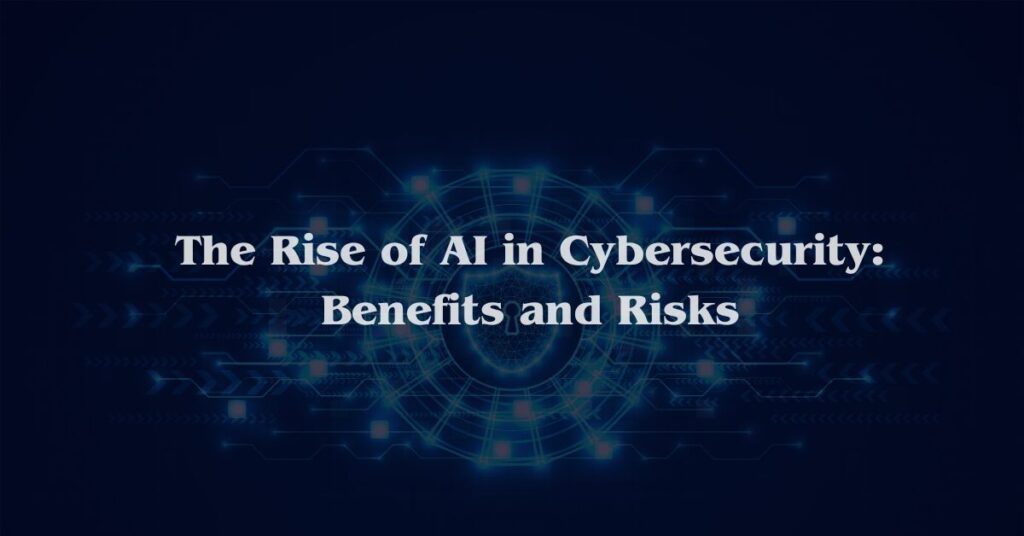
Introduction
Artificial Intelligence (AI) is revolutionizing various industries, and cybersecurity is no exception. As cyber threats become more sophisticated, AI offers promising solutions to enhance defense mechanisms. However, the integration of AI in cybersecurity also brings new challenges and risks. In this article, we explore the benefits and risks associated with the rise of AI in cybersecurity.
Benefits of AI in Cybersecurity
- Enhanced Threat Detection
- AI algorithms can analyze vast amounts of data to identify patterns and anomalies indicative of cyber threats. This enables quicker detection of malware, phishing attacks, and other malicious activities.
- Automated Responses
- AI can automate responses to cyber incidents, reducing the time taken to mitigate threats. Automated systems can isolate affected areas, block malicious traffic, and initiate recovery processes without human intervention.
- Predictive Analytics
- By analyzing historical data, AI can predict potential vulnerabilities and emerging threats. This proactive approach helps organizations prepare and strengthen their defenses against future attacks.
- Improved Accuracy
- AI systems, especially those using machine learning, continuously improve their accuracy in identifying threats by learning from past incidents. This reduces false positives and ensures more reliable threat detection.
- Scalability
- AI can handle large volumes of data and network traffic, making it suitable for organizations of all sizes. Its scalability ensures that even as the number of devices and data increases, security measures remain robust.
- Behavioral Analysis
- AI can monitor user behavior to detect deviations from normal patterns, which may indicate insider threats or compromised accounts. Behavioral analysis adds an additional layer of security by identifying unusual activities.
Risks of AI in Cybersecurity
- Adversarial Attacks
- Cyber attackers can exploit AI systems by feeding them misleading data, causing them to misclassify threats. These adversarial attacks can undermine the effectiveness of AI-based security measures.
- Over-reliance on Automation
- While automation is beneficial, over-reliance on AI can lead to complacency among cybersecurity professionals. Human oversight remains crucial to address complex and nuanced threats that AI might miss.
- Data Privacy Concerns
- AI systems require vast amounts of data to function effectively. The collection and processing of sensitive information can raise privacy concerns, particularly if data is mishandled or inadequately protected.
- Bias in Algorithms
- AI algorithms can inherit biases from the data they are trained on, leading to skewed results. Biased AI systems may overlook certain threats or disproportionately target specific user groups, compromising fairness and accuracy.
- High Implementation Costs
- Developing and deploying AI solutions in cybersecurity can be expensive. Organizations must invest in advanced technology, skilled personnel, and continuous maintenance, which may be a barrier for smaller entities.
- Complexity and Integration Issues
- Integrating AI into existing cybersecurity frameworks can be complex. Ensuring seamless compatibility with current systems and workflows requires careful planning and execution.
Balancing Benefits and Risks
To maximize the benefits of AI in cybersecurity while mitigating the risks, organizations should adopt a balanced approach:
- Human-AI Collaboration
- Combine the strengths of AI with human expertise. Use AI for data analysis and threat detection, while relying on human judgment for decision-making and handling sophisticated attacks.
- Regular Audits and Updates
- Conduct regular audits of AI systems to ensure they function as intended. Keep AI models updated with the latest threat intelligence to maintain their effectiveness.
- Robust Data Management
- Implement strict data management practices to protect privacy and ensure the quality of data used for training AI systems. Address biases by diversifying training datasets.
- Comprehensive Training Programs
- Educate cybersecurity professionals on AI technologies and their applications. Training helps bridge the gap between AI capabilities and human understanding, fostering better collaboration.
- Cost-Benefit Analysis
- Evaluate the cost of AI implementation against the potential benefits. Prioritize AI investments in areas with the highest impact on security posture and risk mitigation.
Conclusion
The rise of AI in cybersecurity presents both significant advantages and notable risks. By enhancing threat detection, automating responses, and leveraging predictive analytics, AI can bolster cybersecurity defenses. However, challenges such as adversarial attacks, data privacy concerns, and algorithmic biases must be addressed to harness AI’s full potential. At Purplesynapz, we are dedicated to helping organizations navigate the complexities of AI in cybersecurity, ensuring a secure and resilient digital landscape.
Hits: 7





